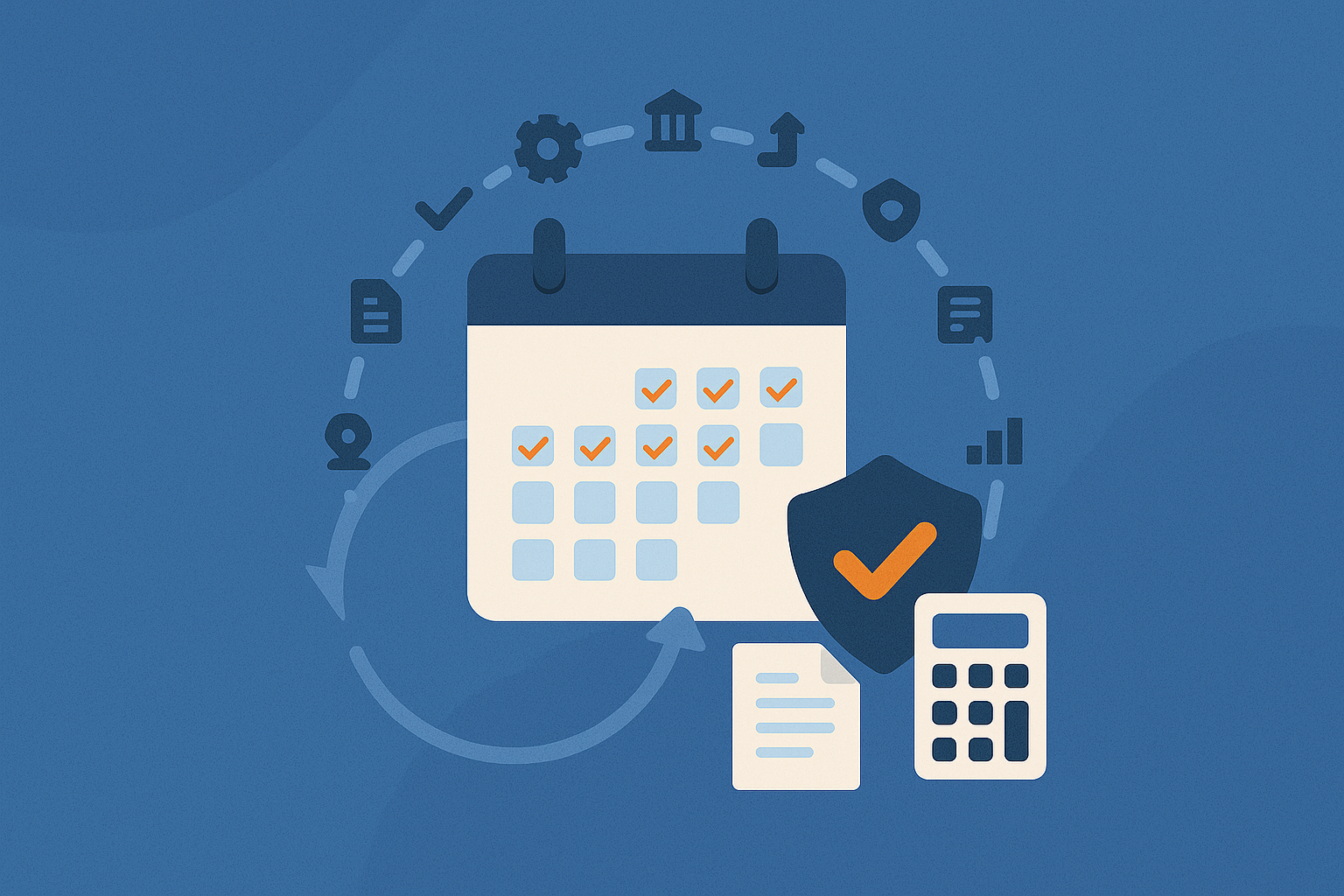
For many small and medium-sized businesses, accounting can feel like a last-minute scramble — something you “deal with later.” But if you want to stay in control of your finances, monthly accounting isn’t optional. It’s your early warning system for cash flow issues, compliance gaps, or profit leaks.
The good news? You don’t need to be an accountant to build a reliable process. With a clear structure and the right tools, you can create a foolproof monthly accounting system that runs smoothly and keeps your business audit-ready all year.
The first step is clarity. Decide when you’ll close your books each month — for example, by the 5th business day. A set schedule creates accountability and helps your team work backward to meet deadlines.
Don’t wait until the last minute. Make it a habit for your team to submit invoices, receipts, and bills daily or weekly, not at month-end. The earlier the data comes in, the cleaner your close will be.
Paper trails create chaos. Switch to digital storage: scan or photograph invoices and receipts the moment they’re received. Store them in a structured, centralized location so everything is easy to trace during reconciliation or audits.
Waiting weeks to log transactions increases errors. Aim to record income and expenses as they happen, or at least weekly. Automation tools can make this step nearly effortless.
Every month, reconcile your bank and credit card accounts to match what’s in your books. Catching discrepancies early saves you headaches down the line.
Run a quick A/P and A/R check to confirm that all invoices have been issued, received, or paid. This step ensures your cash flow picture is accurate and no revenue is slipping through the cracks.
Make sure all tax and payroll obligations are recorded correctly each month. Staying aligned with GST/VAT, income tax, and statutory filings prevents compliance surprises later.
Once everything is reconciled, close your books for that month. This prevents accidental backdated changes and locks in your financial data, making future audits or reporting much easier.
Create your profit & loss statement, balance sheet, and cash flow report. These are your monthly health check — they show you whether you’re growing, stable, or leaking profit.
Don’t just collect data — interpret it. Compare month-over-month results. Are your costs rising? Is revenue seasonal? Spotting trends early helps you make smarter decisions faster.
A foolproof system is one that anyone can understand. Document your monthly accounting steps in a simple SOP. This ensures consistency — even when team members change.
Not everything needs to be manual. Use automation to handle repetitive tasks like invoice capture, reconciliation, and tax calculation. For complex matters, lean on experts — so your accounting stays clean without adding internal overhead.
Building a monthly accounting system is easier when your tools are designed for it. That’s why many SMEs choose ccMonet, an AI-powered platform that blends automation with expert review.
With ccMonet, you can:
A foolproof monthly accounting system isn’t about complexity — it’s about clarity, consistency, and the right tools. By following these 12 steps, you’ll stay ahead of your books, spot problems before they escalate, and keep your business running with confidence.
👉 Book a demo with ccMonet today and see how to build a clean, automated accounting system that works for you — not the other way around.